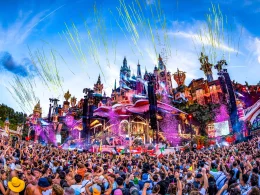From the epic battles in Game of Thrones to the breathtaking landscapes in Avatar, visual effects (VFX) have become an essential part of modern filmmaking. But what exactly goes on behind the scenes to create these stunning movie moments? To find out, we interviewed an Oscar-winning Visual Effects Supervisor who shared insights into his creative process and the importance of VFX in today’s film industry. So buckle up and get ready for a journey into the fascinating world of VFX!
What is VFX?
Visual Effects (VFX) refer to the manipulation of images or videos in post-production, with the aim of creating a realistic and compelling final product. VFX can range from subtle touch-ups to completely transforming scenes and characters that wouldn’t be possible otherwise.
The use of VFX has grown tremendously over the years, as technology has advanced and filmmakers have sought more creative ways to tell their stories. Today’s audiences expect nothing less than stunning visuals that transport them into another world entirely.
One key aspect of VFX is its ability to extend beyond what practical effects alone can achieve. With visual effects, filmmakers can create entire environments, add creatures or objects that don’t exist in real life, enhance stunts for safety purposes, or even replace actors’ faces with digital doubles.
However, good visual effects should always serve the story first and foremost. They should never distract from it but rather enhance it and make it more immersive for viewers. As such, visual effects artists work closely with directors and cinematographers to ensure their creative vision aligns with the overall narrative arc of the film.
In conclusion,VFX is an essential tool in modern filmmaking that allows storytellers to push boundaries creatively while still serving their narratives effectively.
The Different Types of Visual Effects
Visual effects are a staple in the film industry, enhancing storytelling and bringing imagination to life. There are various types of visual effects that serve different purposes in filmmaking.
Firstly, there are practical effects which rely on physical props and makeup to create an effect. This may include animatronics, prosthetics or pyrotechnics. These effects can add a sense of realism and tangibility to scenes.
On the other hand, digital effects involve computer-generated imagery (CGI) that is added in post-production. This includes adding or removing objects from scenes, creating environments or special creatures that cannot be achieved practically.
Another type of effect is matte painting which involves creating a static background for live-action shots. It combines painted elements with live footage to achieve seamless integration between them.
Additionally, motion capture technology allows actors’ movements and expressions to be captured digitally and applied onto animated characters for more realistic movements.
Understanding the different types of visual effects can help filmmakers choose the most suitable techniques for their projects while also appreciating the creativity behind each effect’s execution.
The Process of creating Visual Effects
The process of creating visual effects is a complex and intricate one that requires careful planning, attention to detail, and a lot of hard work. It involves several stages, each of which plays an essential role in bringing the director’s vision to life.
The first step in creating visual effects is pre-production. This phase involves conceptualizing the effects that will be used in the film or TV show and planning how they will be executed. Storyboards, animatics, and pre-visualization techniques are often employed at this stage to help the production team visualize what the final product will look like.
Once pre-production is complete, it’s time for production itself. During this phase, footage is shot on set using green screens or other tools that allow for post-production manipulation. The visual effects team works closely with the cinematographer and director to ensure that everything is captured correctly.
Post-production follows production and can take several months to complete. This stage involves editing together all footage from shooting day(s), adding sound design elements such as music tracks or Foley sounds (sound effects recorded on-location), color grading correction done by digital artists which makes sure everyone looks good even if lighting wasn’t perfect when shots were taken; finally there’s compositing where all individual layers come together into one seamless image.
Creating visual effects takes a lot of time and effort but is well worth it when you see how much they can enhance a scene or film overall!
The Importance of Visual Effects
Visual effects have become a crucial element in the filmmaking industry today. They offer an opportunity to enhance and elevate the storytelling experience by creating realistic, impossible or fantastical scenes that are beyond human comprehension.
Visual effects can be used to create anything from epic battle sequences, alien invasions, breathtaking landscapes to tiny details like removing wires on a set or adding reflections on surfaces.
In blockbuster movies like Avenger: Endgame and Avatar, visual effects played a significant role in bringing their complex stories to life. Without VFX, these movies would not have been as visually stunning and captivating as they were.
Moreover, VFX also serve practical purposes such as cost efficiency. In earlier times filmmakers would need large budgets for building entire sets but now with advancements in technology sets can be created using green screens which helps cut down costs significantly.
The importance of visual effects cannot be overstated; it’s no surprise why many productions allocate huge amounts of budget towards their creation every year.
Conclusion
Visual effects have come a long way since their inception and continue to play an integral role in the filmmaking process. They allow filmmakers to create worlds that were previously unimaginable, transport audiences to places they’ve never been, and tell stories that captivate us time and time again.
Thanks to advancements in technology, the potential for visual effects is limitless. As we’ve seen with incredible films like “Avatar,” “The Lord of the Rings” trilogy, and “Gravity,” visual effects are not only getting better but also becoming more realistic every day.
As filmmakers continue to push boundaries with their storytelling techniques and creative vision, it’s clear that visual effects will remain a crucial component of modern cinema. From enhancing live-action shots to creating entire worlds from scratch, VFX artists work tirelessly behind the scenes to bring our favorite movies to life.
We hope this article has given you valuable insight into what goes on behind the scenes of VFX. It’s no easy feat bringing these spectacular visuals onto our screens – but as this year’s Oscar-winning Visual Effects Supervisor proved once again – it can be done!









